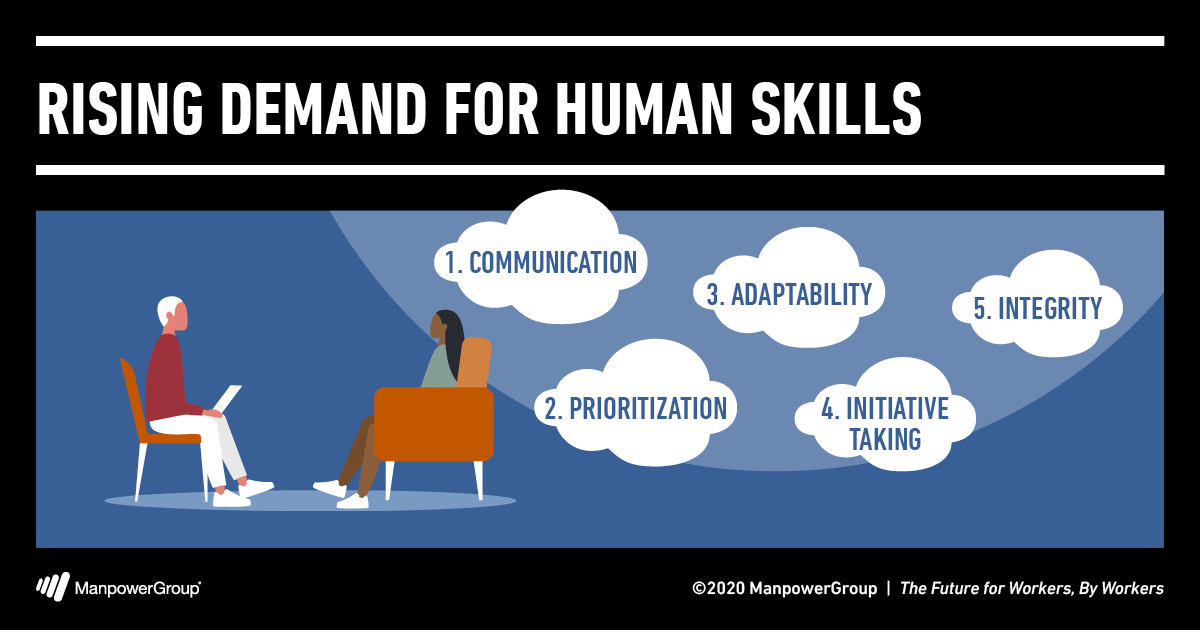A dramatic workforce transformation is happening in front of our eyes. Work literally left the building and whole industries are disrupting at speeds never seen before.
In these unpredictable times, one thing is certain – this crisis should be a catalyst for a new future of work, that is more flexible, more diverse and more wellbeing-oriented than we could ever have imagined.
To find out how this crisis is accelerating What Workers Want, ManpowerGroup asked more than 8,000 people in 8 countries about the future for workers.
Download the results for fresh insight into how this next normal might eventually be better for everyone.
---------------------------------------
1. COVID-19: Global Impact At Work
Keeping their job is a top priority for workers everywhere. After health concerns, workers are most worried about returning to an old way of working, losing the flexibility they have gained. Work-life balance shows its importance with 8 in 10 people asked want more remote work to better balance family life - and most believe they’ll have a better work life blend going forward. 43% workers asked also agree that the crisis marks the end of the full-time work in the office.
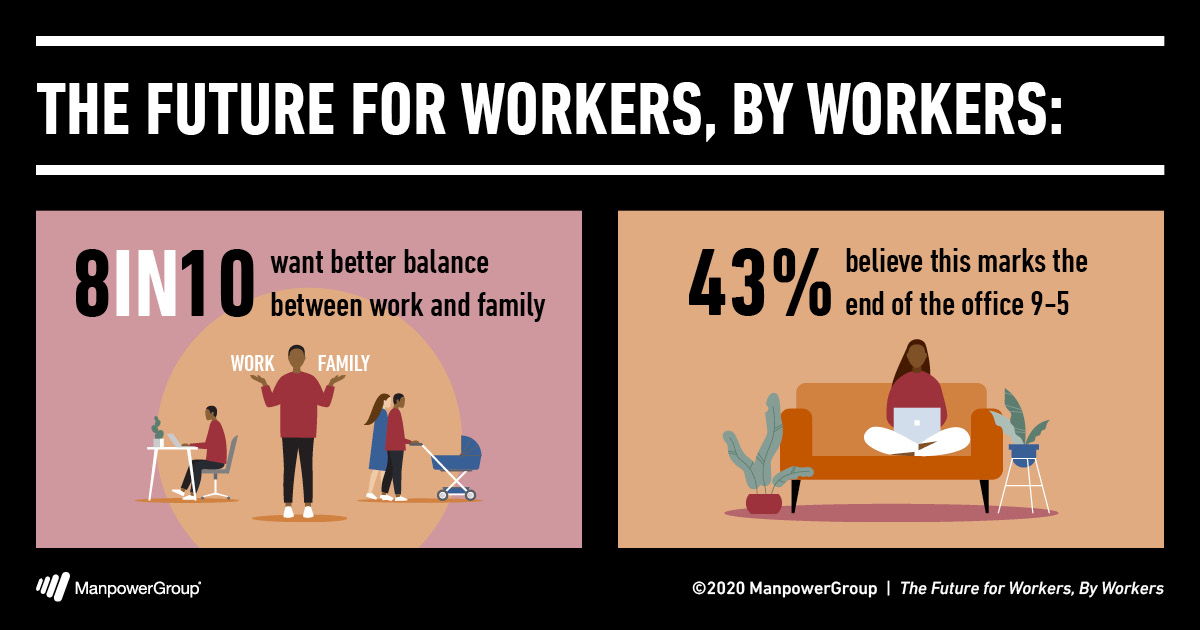
2. Celebrate or Commiserate - Returning to the Workplace
As lockdowns lift and restrictions ease, workers want to feel reassured that health, safety and wellbeing comes first when returning to the workplace. Trust and transparency have never been more important and the best employers know they need data and insight to instill confidence. Pulse surveys, feedback channels, consultation and communication are critical.
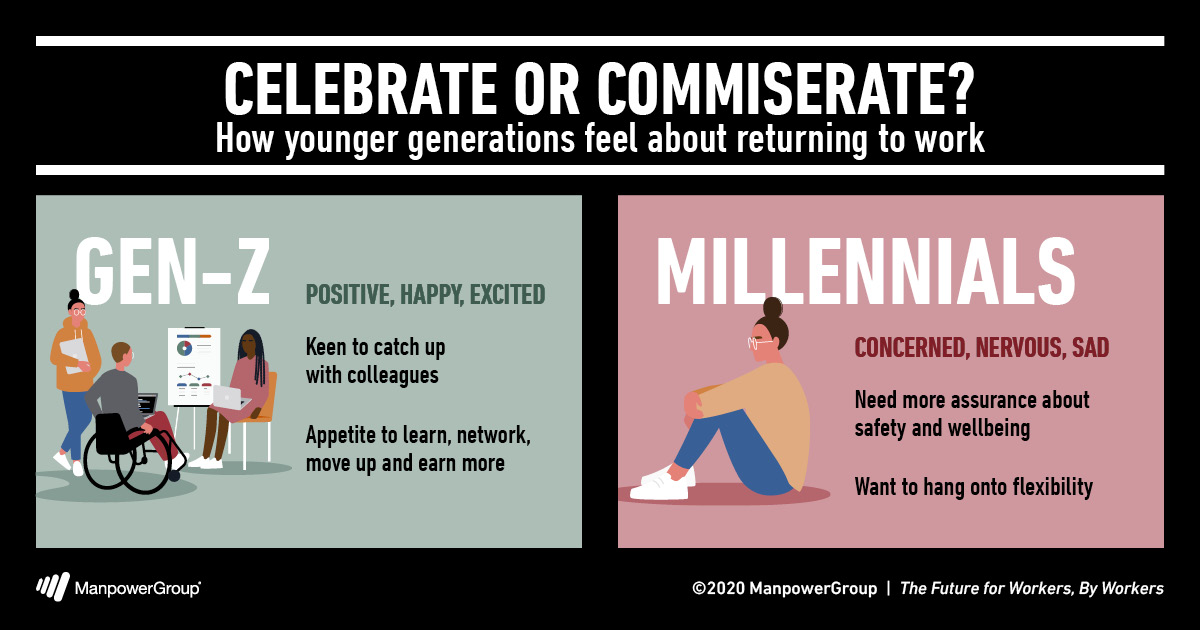
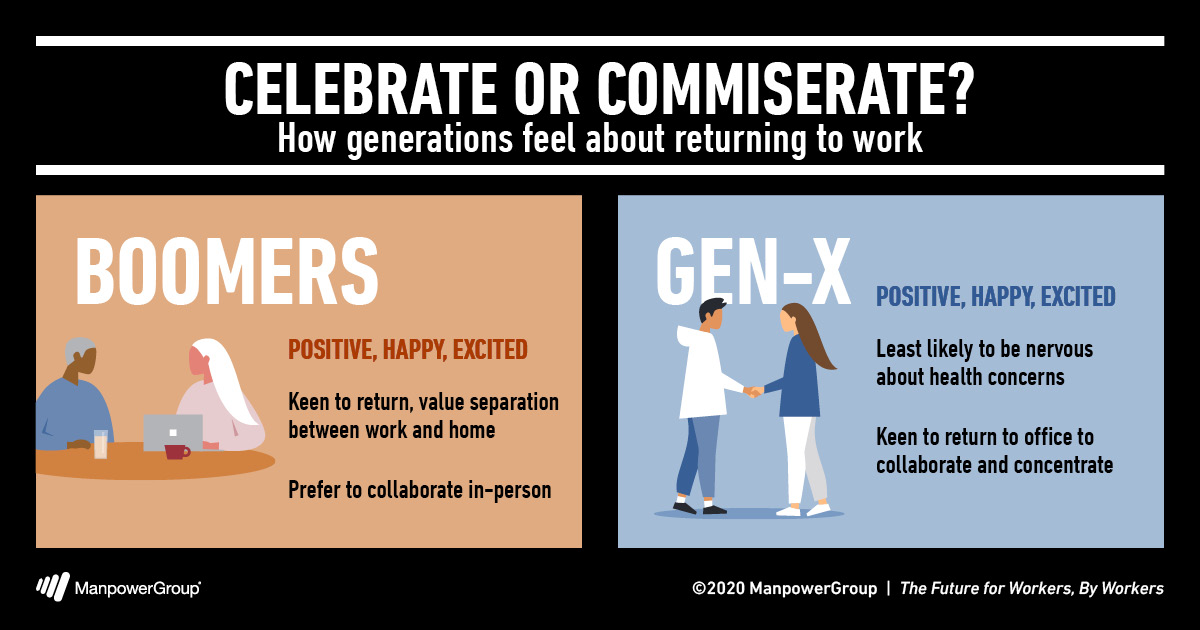
3. Acceleration of Inequity - More Haves, Even More Have Nots
Workers are united in what they want for the future – to keep their job, stay healthy, learn and keep developing skills, and to not go back to the old way of working. Yet look closer and an even greater bifurcation within the workforce looks likely. Those with in-demand skills can call the salary shots, work remotely, avoid the commute and stay safe at home. Those with declining skills are required to commute to work onsite, and subject to even greater exposure.
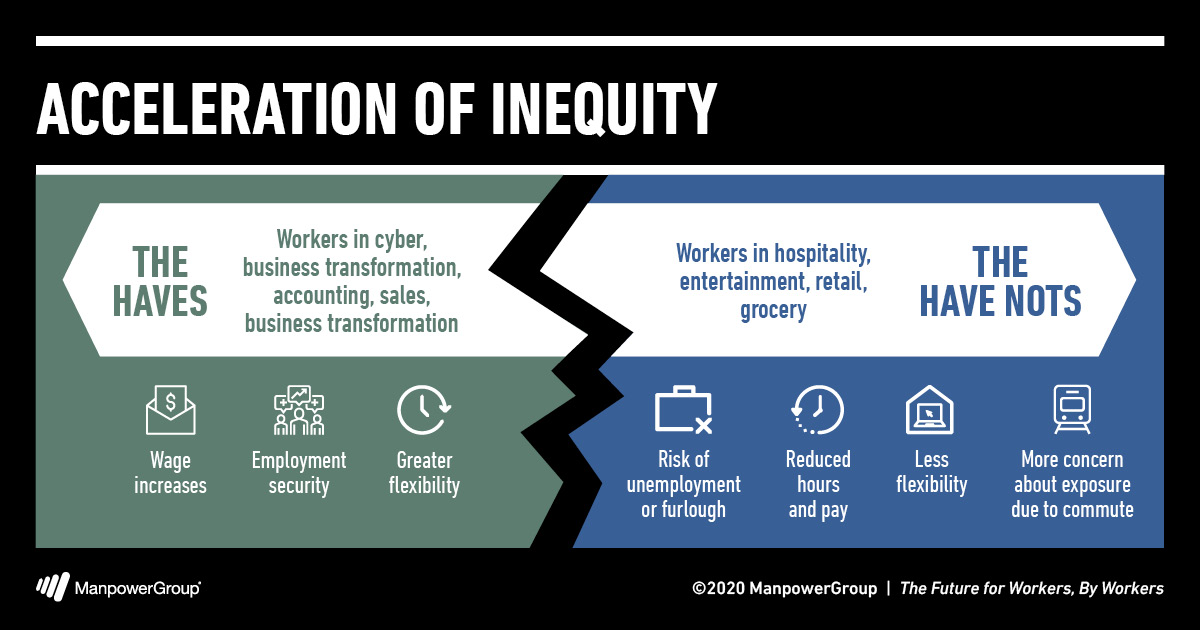
4. The Great Skills Shift: How COVID-19 is Reshaping In-Demand Skills
The biggest workforce shift and reallocation of skills since World War II began in March. Skills that were en vogue in 2019 might now be out of fashion; and the shift is swift - even those skills most in demand in the early phase of the crisis are different to demand emerging now and expected in future.
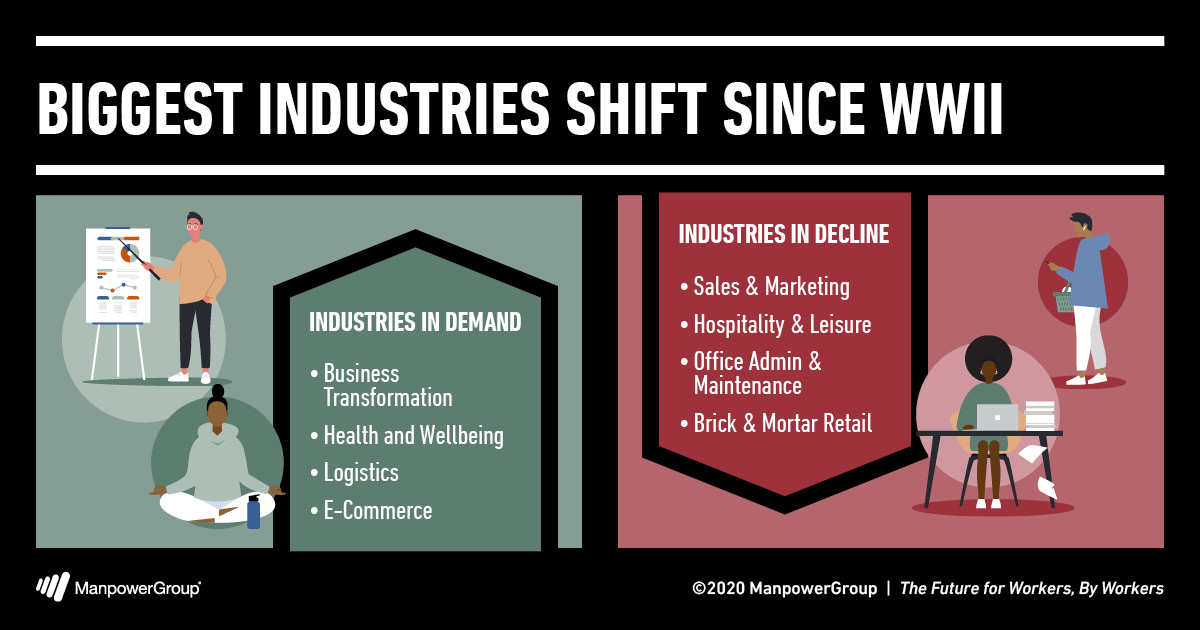
This crisis is accelerating the demand for technical and human skills that we have been tracking and predicting for some time. Acute skills shortages are exacerbating in tech – demand for cyber security, software development and data analysts continue unabated. And there is rising demand too for human or power skills - in times of rapid transformation and uncertainty these so-called soft skills are more important than ever in workers and in leaders.
